Published in the Ocean Watch column, Honolulu Star-Advertiser © Susan Scott
October 12, 2007
Today ends my five weeks alone at anchor off the Great Barrier Reef’s Lizard Island. I thought I’d get a lot of writing done in that time, but between communing with clams, hiking up hills, talking to lizards, stalking fruit bats and eating ants, I was too busy to write.
A lot of my time went to snorkeling. Coral reefs surround the island, and three lay right here in my bay. During low tides the colors and shapes of these reefs remind me of great panes of stained glass.
Who can sit at a computer with art like that in the back yard? Not this writer.
Five species of giant clams thrive here, all brightly colored. The reef closest to the boat, called the Clam Garden, has them all, particularly the big guys. In one spot alone 13 huge clams sit together, the meditating monks of the marine world.
Some giant clams stand out for their eye-popping iridescent colors. A resident biologist told me these shimmering colors come from fat cells acting like tiny lenses. These increase the intensity of light to the resident algae, which give the clams both color and food.
When I feel waterlogged, I hike up Cook’s Look to view endless turquoise reefs, Lizard Island’s teeming lagoons and my perfect anchorage. Standing above all this beauty is inspiring, and before I’m even down the hill, I’m planning what to do next.
Sometimes it takes me a long time to go a short distance because lizards also use the trails, and I give them right of way.
The largest are monitor lizards, called goannas here. The term goanna is the Australian version of the word iguana, but the two kinds of lizards are not related.
Lizard Island’s monitors are speckled gray-green in color, grow about 3 to 4 feet long and have forked tongues constantly flicking to sense insects and smaller lizards.
The goannas here are accustomed to seeing people, but if you venture too close, they freeze in their tracks. These moments are perfect for pictures, and I always thank the lizards for their cooperation.
Less obliging are the black fruit bats, adorable creatures that hang upside down in a mangrove forest near the bay. Fruit bats forage at night for fruit and nectar, and roost during the day in noisy camps.
These bats chatter, squabble and fidget all day long but are wary of people. If one bat sees me sneaking up, the alarm goes out and the whole camp moves, with great commotion, deeper into the mangroves where the mud is too soft for walking.
My lizard pictures are a lot better than my bat pictures.
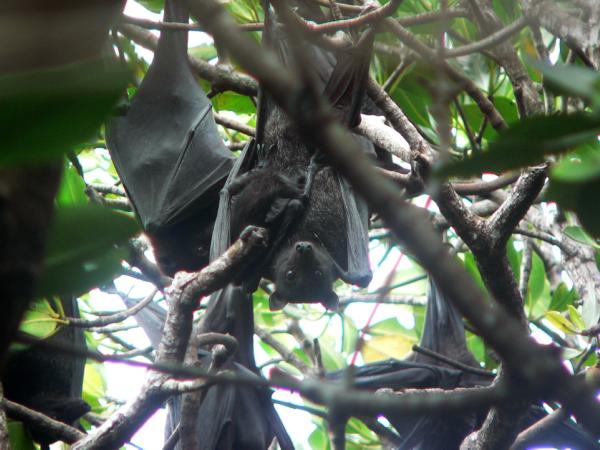
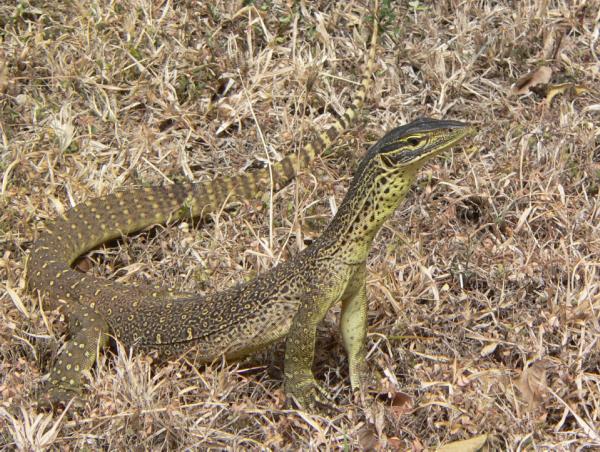
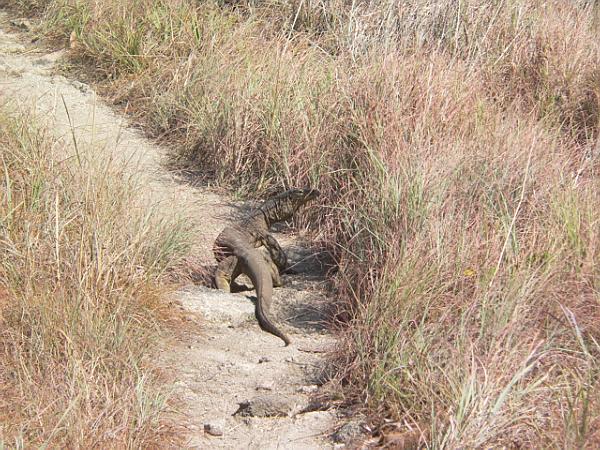
During my walks around the island, I make frequent stops to watch the green tree ants. These ants form bridges between leaves by linking their legs and then pull the leaves together to make a nest inside. I’ve not seen this marvel of nature yet, but I did eat one of these ants.
When a local cruiser and I were admiring an intricate leaf nest, she said, “Crush an ant and smell it.” I did. They smell like oranges.
“Now eat it,” she said.
Get serious, I thought. But she was. Before I could think about it too hard, I popped the smashed ant in my mouth. They taste like oranges, too.
When Craig, my co-captain, arrives today, my solitude will be over, but my stay here won’t be. Still, I won’t get any writing done. Before we leave Lizard, I have a few things to show him.
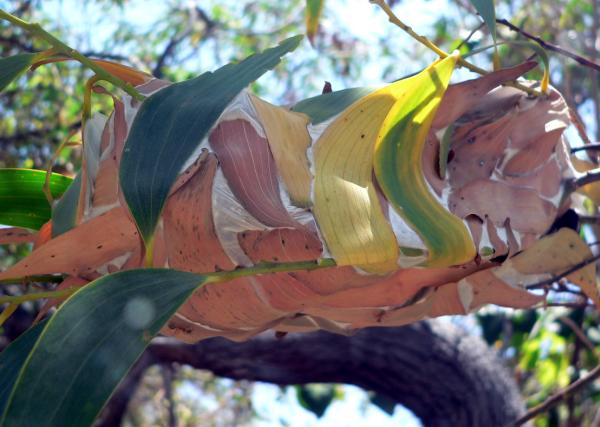 Green tree ant nest
Green tree ant nest
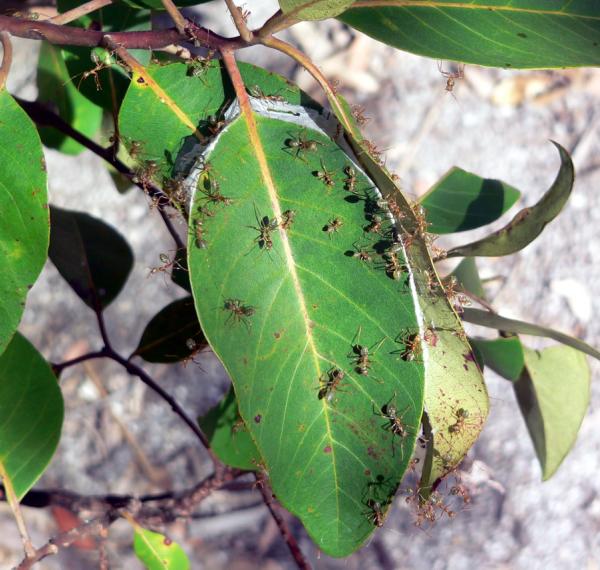 Green Tree Ants
Green Tree Ants